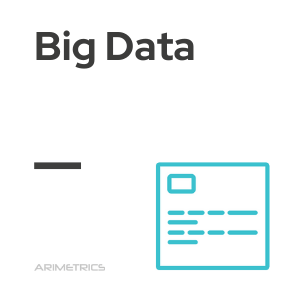Definition:
Big Data is a term that refers to extremely large and complex data sets that exceed the capabilities of traditional data processing applications. This concept encompasses a number of processes, including analysis, capture, authentication, search, sharing, storage, transfer, visualization, query and privacy of information. Big Data is often associated with the use of predictive analytics and other advanced techniques to extract value from this data, rather than a specific data set size. Accuracy in handling Big Data can lead to more informed and confident decisions.
The size of Big Data
Handling Big Data presents significant challenges for traditional relational database management and data visualization systems. These systems often struggle to process large volumes of data, requiring the use of software that can run in parallel on multiple servers. The concept of Big Data has no defined size, as it can range from a few terabytes to several petabytes, depending on the capabilities of the users and the tools available. These large volumes of data require new integration techniques and technologies to extract knowledge from data sets that are diverse, complex and large in scale.
The 3Vs of Big Data
The concept of Big Data is traditionally defined by the “3 Vs”: Volume, Velocity and Variety.
- Volume: Refers to the massive amount of data generated and collected, making it possible to observe and analyze patterns and trends on a large scale.
- Velocity: Refers to the speed with which data is generated and processed, being of great importance for applications that require immediate responses.
- Variety: Refers to the diversity of data types and sources, including text, images, audio and video.
However, over time, more “Vs” have been added to better capture the complexity and challenges of Big Data. These additional features are described below:
- Veracity: Refers to the quality and reliability of the data, essential to avoid erroneous conclusions based on inaccurate data.
- Value: Focuses on the ability to extract value from data, identifying which data is useful to obtain actionable insights.
- Variability: Refers to the inconsistency of the data, which may change over time and complicate its analysis.
- Visualization: Data visualization is key to interpreting and communicating the insights obtained effectively.
- Volatility: Refers to the duration or useful life of the data, adequately managing those that are relevant only for a short period of time.
Examples of Big Data use
Big Data has transformed multiple industries by providing valuable insights that improve efficiency and decision making. Below are some examples of how Big Data is being applied in different industries:
- Digital: In digital marketing, Big Data makes it possible to personalize campaigns by analyzing user behavior. In online advertising, demographic and behavioral data are used to deliver targeted ads. In addition, it improves the user experience on websites and applications by analyzing navigation data, and in e-commerce, it predicts purchasing trends and personalizes product recommendations. It also strengthens cybersecurity by detecting unusual patterns that could indicate threats.
- Health and medicine: Big Data is used for predictive analytics, such as predicting disease outbreaks and personalizing treatments. It also facilitates medical research by analyzing genomic and clinical data, accelerating drug discovery and development.
- Marketing and sales: Companies analyze consumer behavior to personalize offers and improve customer experience. In addition, sentiment analysis in social networks allows measuring brand perception and adjusting marketing strategies.
- Finance: Big Data helps in fraud detection by identifying suspicious patterns. It is also used in risk management, assessing credit and market risks with large volumes of financial data.
- Retail: In the retail sector, inventory management is optimized by predicting demand. It also enables price optimization by dynamically adjusting prices based on sales data and customer behavior.
- Transportation and logistics: Companies optimize delivery routes, reducing costs and improving efficiency. They also implement predictive maintenance to anticipate equipment failures by scheduling preventive maintenance.
- Energy: Big Data is used in power grid management to monitor and optimize energy use. In renewable energies, it facilitates the analysis of meteorological data to optimize energy generation.
Big Data challenges and considerations
Despite its many advantages, Big Data presents several challenges that organizations must address to effectively maximize its potential. Below are some of the key challenges and considerations associated with using Big Data:
- Privacy and security: The collection and storage of large volumes of data poses significant risks to the privacy of individuals. Organizations must implement robust security measures to protect sensitive information and comply with privacy regulations, such as GDPR in Europe.
- Data quality: The accuracy and reliability of Big Data analytics depend on the quality of the data. It is essential to ensure that the data is accurate, complete and up-to-date to obtain valid and useful insights.
- Data management: Handling large volumes of data requires adequate infrastructure and advanced data management tools. Organizations must invest in technology and trained personnel to manage and analyze data efficiently.
- Interpretation of results: Extracting value from Big Data involves not only data analysis, but also the ability to interpret the results in a way that makes them understandable and actionable for strategic decision making.
- Data integration: Data comes from a variety of sources and in different formats, which can complicate data integration. Organizations must develop strategies to integrate data in a consistent and efficient manner.

